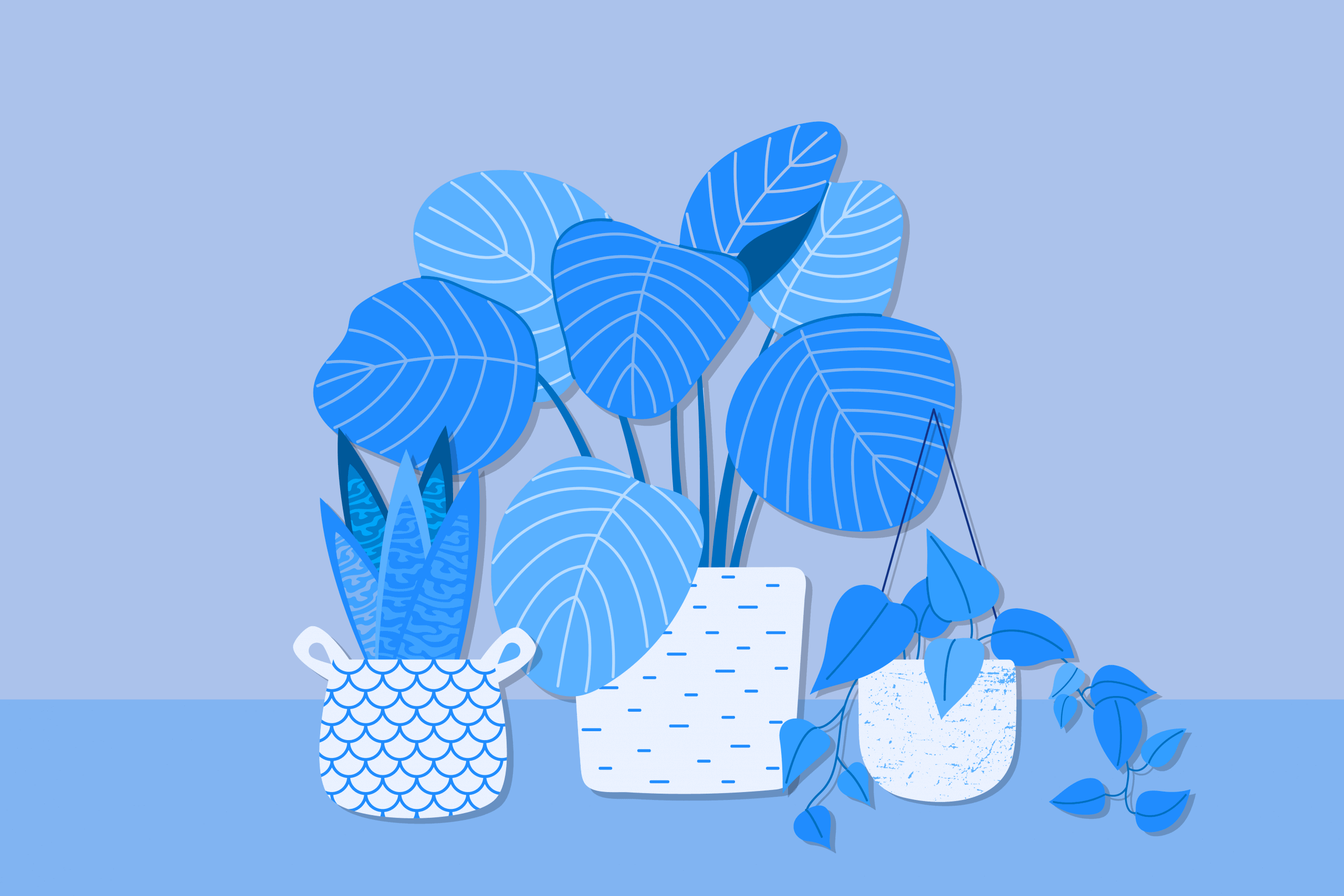Key Takeaways
- Benefits of Bedroom Plants: Bedroom plants offer several benefits, including improving air quality by removing toxins, regulating humidity, and providing a calming and visually appealing atmosphere. They can also enhance mood, reduce stress, and contribute to better sleep quality.
- Alternatives to Bedroom Plants: If you prefer low-maintenance or non-living alternatives, you can consider artificial plants, preserved plants, botanical-inspired art, air purifiers, essential oils, and other decor items to create a calming bedroom environment.
- Placement and Care: When adding plants to your bedroom, consider their light and water requirements. Place them near windows or on shelves, and ensure they receive adequate sunlight. Start with one plant and gradually add more based on your comfort level and available space.
The best bedroom plants may do more than brighten up your bookshelf. They can also make you happier, make you more creative, make you less stressed, make you more productive, are naturally air purifying, and do much more.
Many of us are unaware of how critical air quality is. Air pollutants like formaldehyde and benzene are toxins often found in insulation, paint, and furniture. These toxins can pollute the air inside our homes.
Consider adding bedroom plants to your house to help filter the air. Plants may filter and clean the air we breathe every day by taking in harmful gases through the pores in their leaves.
Bedroom plants provide several health advantages and give a pleasant touch of design and a vibrant vitality to any interior environment. If you want to bring some greenery into your bedroom, we are here to bring you some of the best bedroom plants you can use!
As a quick note, some plants can be toxic to pets, so it’s important to choose non-toxic plants or keep toxic ones out of reach if you have animals in your home. Common toxic plants for pets include lilies, aloe vera, and philodendron.
Why Having Plants in Your Bedroom Is a Good Idea
Plants make a house feel like a home, and they can give your indoor spaces more than just a hint of fresh air. Let’s examine what plants can do for you and why they suit the bedroom.
- Regulates Humidity: You might have woken up with a sore or dry throat. Plants in the bedroom keep the humidity at the right level for the body and keep respiratory problems at bay.
- Cleans the Air: Plants make negative ions, which cleanse the air as an air purifier does. Any dust, germs, or allergens should stay away, perfect for anyone setting up a bedroom to manage asthma.
- Cuts Down on Harmful Gases: Many plants help eliminate toxic gases like carbon dioxide, formaldehyde, benzene, xylene, toluene, etc.
- Mind-Calming: This is one of the benefits of having plants in a room that doesn’t get enough attention. They help you keep your cool and calm down.
- Can Aid Sleep: Some plants, such as valerian, aloe vera, and lavender, help you sleep better. These are good for babies and small children.
Bedroom Plants That Work
Plants create a sense of tranquility and help to soothe the mind. They are not only gorgeous, but they also provide peace and comfort. Most plants are grown outside, but many of the best bedroom plants may also be used indoors.
It is not an exaggeration to say that having the perfect bedroom plants can result in better sleep and may change your life. The appropriate plants can calm your mind, cleanse the air, and lift your spirits. It’s no surprise that many individuals turn to plants as a way to relieve symptoms of Verified Source National Library of Medicine (NIH) World’s largest medical library, making biomedical data and information more accessible. View source anxiety and depression.
To be clear, plants in your bedroom quarters offer more than a cosmetic improvement. Many herbs also have particular properties that boost your sleep quality directly or indirectly, such as pleasant and relaxing aromas. Let’s look deeper at the finest plants for sleeping in the bedroom!
Best Plants for the Bedroom
Golden Pothos
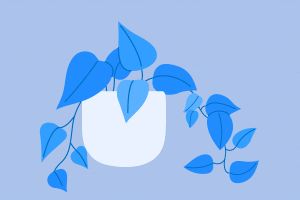 The trailing pothos plant, which looks similar to the heart leaf philodendron with its green heart-shaped leaves flecked with yellow, is efficient in filtering out formaldehyde, carbon monoxide, and benzene.
The trailing pothos plant, which looks similar to the heart leaf philodendron with its green heart-shaped leaves flecked with yellow, is efficient in filtering out formaldehyde, carbon monoxide, and benzene.
The golden pothos is also a highly easy-to-grow low maintenance plant. Because of its tolerance, it has been dubbed “the cubicle plant.”
Rubber Plant
 With its beautiful forest green foliage, this low-maintenance beauty is a powerful toxin eliminator and air purifier of carbon monoxide and other air pollutants.
With its beautiful forest green foliage, this low-maintenance beauty is a powerful toxin eliminator and air purifier of carbon monoxide and other air pollutants.
This plant’s numerous leaves attract significant impurities, making it suitable for purifying interior air. Allow these plants to dry between waterings and maintain them in bright indirect sunlight conditions ranging from moderate light to low.
Peace Lily
 For a good reason, the peace lily, or Spathiphyllum, is one of the more lasting and popular bedroom houseplants: its glossy green leaves survive in high- or bright indirect light conditions, and its roots endure a range of watering methods.
For a good reason, the peace lily, or Spathiphyllum, is one of the more lasting and popular bedroom houseplants: its glossy green leaves survive in high- or bright indirect light conditions, and its roots endure a range of watering methods.
By drooping when thirsty and instantly perking up with a sip of water, the peace lily takes the guesswork out of watering.
Place the peace lily near your bedroom window so it can stimulate the growth of white flower-like chutes that will last for several weeks. If your area is rather gloomy and flowering is doubtful, consider peace lilies type with white variegated leaf-like ‘Domino’ to liven up lower light surroundings.
Parlor Palm
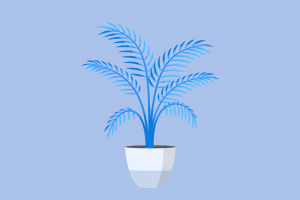 In its native Guatemala, the parlor palm, or Chamaedorea elegans thrives in partial to complete shadow, you’ll see these species flourishing in malls, offices, and other indoor locations with little natural light. Too much light will actually burn the parlor palm’s leaves, so keep it away from windows where you place them.
In its native Guatemala, the parlor palm, or Chamaedorea elegans thrives in partial to complete shadow, you’ll see these species flourishing in malls, offices, and other indoor locations with little natural light. Too much light will actually burn the parlor palm’s leaves, so keep it away from windows where you place them.
Placement near a steamy bathroom with more humidity is good since it will repel pests that thrive in dry circumstances, like spider mites.
English Ivy
 English ivy, Hedera helix, may be aggressive for an outdoor plant, extending clinging tendrils over buildings and up tree trunks. In a bedroom, you may use English ivy’s spreading out abilities to make living art by training vines across a trellis, hoop, or topiary shape. Or you can save on nightstand space by using a hanging planter attached to your wall or ceiling.
English ivy, Hedera helix, may be aggressive for an outdoor plant, extending clinging tendrils over buildings and up tree trunks. In a bedroom, you may use English ivy’s spreading out abilities to make living art by training vines across a trellis, hoop, or topiary shape. Or you can save on nightstand space by using a hanging planter attached to your wall or ceiling.
The trailing tendrils thrive in all sorts of light conditions and look great in hanging baskets or even draped over a side table. These plants thrive with little irrigation and can withstand a week-long trip without a hitch.
Gardenia
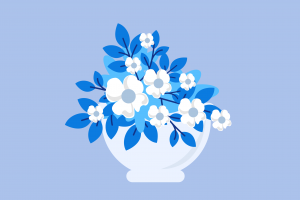 The Gardenia requires a bit more care than the other plants on our list, but the extra effort will be well worth it. These plants produce beautifully perfumed flowers and are a popular choice for the bedroom.
The Gardenia requires a bit more care than the other plants on our list, but the extra effort will be well worth it. These plants produce beautifully perfumed flowers and are a popular choice for the bedroom.
According to research, these herbs may help you reduce anxiety, purify the air, and sleep better. Place these plants in bright light and always keep the soil wet.
Areca Palm
 The Areca Palm is a tropical based plant that lends a lush look to any interior space. These plants are loved for their ability to filter indoor air quality by removing dangerous chemicals such as benzene, formaldehyde, and trichloroethylene. They are one of the best indoor plants, leaving room for more oxygen at night.
The Areca Palm is a tropical based plant that lends a lush look to any interior space. These plants are loved for their ability to filter indoor air quality by removing dangerous chemicals such as benzene, formaldehyde, and trichloroethylene. They are one of the best indoor plants, leaving room for more oxygen at night.
According to one study, Verified Source National Library of Medicine (NIH) World’s largest medical library, making biomedical data and information more accessible. View source the Areca Palm is one of the more significant plants for absorbing carbon dioxide from the air in your home. These palms grow well in bright indirect light with equally wet soil.
Snake Plant
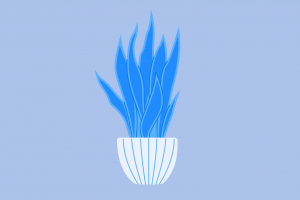 Sansevieria trifasciata, also known as mother-in-law’s tongue, is a sculptural, strong example that helps purify the air better than nearly any other indoor air-purifying plants.
Sansevieria trifasciata, also known as mother-in-law’s tongue, is a sculptural, strong example that helps purify the air better than nearly any other indoor air-purifying plants.
The mother-in-law’s tongue has leathery, leaves that have developed to endure the severe circumstances of Western Africa, where the soil is weak, and rain falls irregularly.
With the snake plant, you need not worry about dirty, lost leaves or trimming; just water every few weeks. Plant it in a container with enough drainage holes, as standing water will cause the snake plant to decay.
Corn Plant
 The corn plant, or Dracaena fragrans gives homeowners the appearance of a tree without the size difficulties that come with trees. Long, glossy leaves cover the tops of sturdy trunks.
The corn plant, or Dracaena fragrans gives homeowners the appearance of a tree without the size difficulties that come with trees. Long, glossy leaves cover the tops of sturdy trunks.
Corn plants are robust and might look great in a bedroom corner. The corn plant tolerates shade and may produce white blossoms if grown in a sunny location.
Despite its name, the corn plant is deadly and should not be kept around animals or curious small children.
Lavender
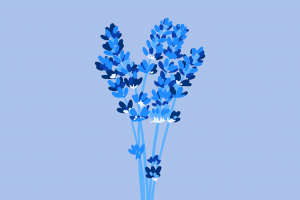 The soothing properties of lavender flowers and essential oil are well known. Although it is not considered a bedroom plant, it has been shown to reduce blood pressure and stress levels, making it one of the best plants for the bedroom.
The soothing properties of lavender flowers and essential oil are well known. Although it is not considered a bedroom plant, it has been shown to reduce blood pressure and stress levels, making it one of the best plants for the bedroom.
Keep a small lavender plant in your bedroom if you have trouble sleeping. It may help you sleep better. You could also consider a diffuser with lavender-scented oil, as lavender is often touted as one of the best essential oils for sleep.
Gerber Daisy
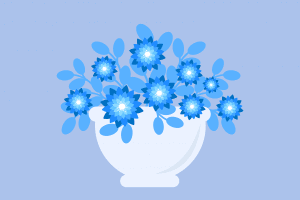 For most people, the Gerber daisy, or Gerbera, is a beautiful indoor plant. This South African plant will not tolerate too much or low light, like a philodendron might. Consider the Gerber daisy the same way you would consider an exceptionally long-lasting flower arrangement: momentary visual delight that you will ultimately have to discard.
For most people, the Gerber daisy, or Gerbera, is a beautiful indoor plant. This South African plant will not tolerate too much or low light, like a philodendron might. Consider the Gerber daisy the same way you would consider an exceptionally long-lasting flower arrangement: momentary visual delight that you will ultimately have to discard.
Gerber daisies are spoiled and coddled under greenhouse-like conditions that cannot be recreated in an ordinary bedroom. It’s worth the low price, though, to have a plant with such exquisite, brilliant blossoms bring happiness to your bedside.
While it is still active, it will perform an excellent job of eliminating trace organic contaminants from the air providing more oxygen at night.
Fiddle Leaf Fig
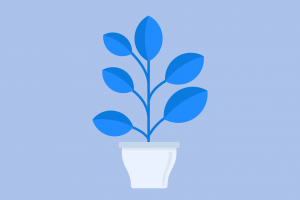 The fiddle leaf fig plant, or Ficus lyrata is one of the more popular houseplants, frequently appearing in home magazines, blogs, and television shows. Because its vast leaves are its focus point, proper illumination is vital for keeping your plant healthy in a bedroom environment.
The fiddle leaf fig plant, or Ficus lyrata is one of the more popular houseplants, frequently appearing in home magazines, blogs, and television shows. Because its vast leaves are its focus point, proper illumination is vital for keeping your plant healthy in a bedroom environment.
Fiddle leaf figs grow in the jungle’s gloomy understory, but indirect, low light from a window helps them thrive. Place your plant on a plate of stones filled with water to improve humidity around the plant. The fiddle leaf fig prefers water, light, and temperature in moderation. Your plant will suffer if you have too much or too little.
Philodendron
 The classic philodendron is just as popular now as decades ago for folks looking for a low-maintenance home plant. They are often used at home trailing from a corner hanging basket as they are taking the show as a trellis.
The classic philodendron is just as popular now as decades ago for folks looking for a low-maintenance home plant. They are often used at home trailing from a corner hanging basket as they are taking the show as a trellis.
Philodendrons withstand a broad range of light conditions but can become leggy if light conditions are too low. When it comes to water, little is more, and you may root new plants in a cup or jar of water if you want to propagate more plants.
Devil Ivy
 Devil’s ivy is one of the top plants recommended by NASA for indoor air purifying. It is attractive and may be used as a study table decoration.
Devil’s ivy is one of the top plants recommended by NASA for indoor air purifying. It is attractive and may be used as a study table decoration.
Because these plants prefer medium light, place them in front of or near a window. Another advantage of these plants is that they are simple to care for. The name “devil’s ivy” is even a reference to how difficult it is to kill the plant, so it’s perfect for anyone who feels uncertain about whether or not they have the green thumb needed for a bedroom plant.
Spider Plant
 Allow the spider plant, or Chlorophytum comosum to charm to enter your bedroom with fresh air.
Allow the spider plant, or Chlorophytum comosum to charm to enter your bedroom with fresh air.
The spider plant, sometimes known as the aircraft plant, is well-known for its capacity to generate many “pups” or baby spider plants on its stems. These baby plants eventually fall from the mother plant. You may leave these tiny plants alone, or clip them and reuse them for gifting or other uses.
Spider plants thrive in a variety of light situations with medium moisture. If your spider plants’ leaf tips become brown, gather rainwater to irrigate them since they are sensitive to fluoride in tap water.
Chamomile
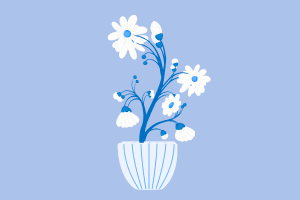 Most people know that chamomile regulates sleep in tea or essential oils. This is why they are among the best plants for your bedroom. This is one of the many plants that can help you sleep all night.
Most people know that chamomile regulates sleep in tea or essential oils. This is why they are among the best plants for your bedroom. This is one of the many plants that can help you sleep all night.
Keeping a chamomile plant near your bed will help you fall asleep. You might also consider a cup of chamomile tea before bed, as many consider it one of the best teas for sleep.
Aloe Vera
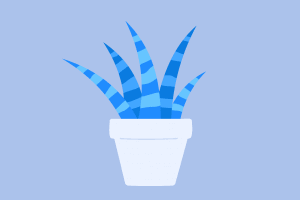 The aloe vera plant (Aloe barbadensis) requires a sunny area in the bedroom but don’t mind if you don’t water them for a few weeks.
The aloe vera plant (Aloe barbadensis) requires a sunny area in the bedroom but don’t mind if you don’t water them for a few weeks.
The succulent aloe vera generates offsets, which you may use to propagate new plants. The young plants can act as replacement plants if you remove the leaves to collect the gel for wounds and sunburns.
Valerian Plant
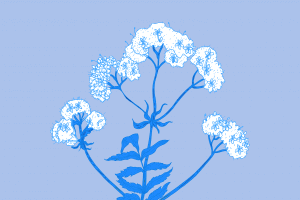 According to research, breathing the blooms of the valerian plant helps you fall asleep a bit faster. The pure, beautiful plant looks fantastic in a bedroom and makes an excellent house present.
According to research, breathing the blooms of the valerian plant helps you fall asleep a bit faster. The pure, beautiful plant looks fantastic in a bedroom and makes an excellent house present.
Many maintain it in their houses to add value to the decor, which works nicely. We should note that a mature valerian plant can grow to be quite tall, so you might want to make sure you have sufficient room for a floor pot.
Chinese Evergreen
Chinese Evergreens or Aglaonema are a flowering plant that is not only visually stunning but also incredibly low-maintenance. If you’re not exactly blessed with a green thumb, fear not! These plants are known for their ability to thrive in low-light conditions, making them perfect for brightening up those cozy corners of your bedroom that don’t get a lot of direct sunlight. So, even if your room doesn’t have big, sun-drenched windows, the Chinese Evergreen will still be happy and healthy.
The Chinese Evergreen is also an air-purifying plant. In other words, they have the incredible ability to filter out harmful toxins from the air, helping to create a cleaner and fresher atmosphere in your bedroom. So, when it’s time to catch some Z’s, you can rest easy knowing that your Chinese Evergreen is working hard to keep the air around you as pure as can be.
Swiss Cheese Plant
The Swiss Cheese Plant, scientifically known as Monstera deliciosa, boasts a unique and eye-catching appearance. Its large, glossy leaves are full of artistic holes, resembling a piece of living green Swiss cheese! This distinctive feature adds an element of playful charm to any room, making it an instant conversation starter. So, if you’re looking to infuse your bedroom with a touch of fun and personality, the Swiss Cheese Plant is here to do just that!
Another reason the Swiss Cheese Plant is perfect for the bedroom is its easy-going nature. It’s a relatively low-maintenance plant, making it a great choice for busy individuals or those new to plant care. With a moderate amount of light, regular watering, and occasional fertilizing, this leafy companion will thrive happily in your bedroom without demanding too much attention.
ZZ Plant
With its unique and vibrant appearance, the ZZ plant will instantly bring life and energy to your personal sanctuary. Its glossy, waxy leaves are a sight to behold, reflecting any available light and casting a gentle glow that creates a soothing and calming ambiance. Even if your bedroom doesn’t receive much natural sunlight, the ZZ plant will continue to flourish and bring a burst of greenery to your space.
Moreover, caring for the ZZ plant is a breeze, making it a wonderful option for those who may not possess much knowledge of plant care and want a bedroom plant suited for beginners. This hardy plant can withstand occasional neglect, as it is adapted to survive periods of drought. It requires minimal watering and prefers to dry out between waterings, which means you don’t have to worry about constantly tending to its needs.
How Bedroom Plants Can Help
One of the best things about having plants in the bedroom is that they can improve the quality of the air inside. The dry air inside is blamed for several health problems, such as breathing problems, sore throats, colds, and even acne.
Indoor plants help keep the humidity level steady and, in some cases, make it higher by releasing water vapor when they breathe. That said, too-high humidity levels can contribute to the growth of mold and mildew in the home, so it’s important to keep an eye on humidity levels and avoid overwatering your plants.
Plants also give off negative ions, like the ions made by expensive machines that clean the air. The negative ions stick to any particles in the air, like dust, mold spores, bacteria, and allergens, and get rid of them.
Negative ions have also improved mental health, productivity, and happiness. Some common houseplants go even further to improve indoor air quality by removing formaldehyde, trichloroethylene, xylene, toluene, and benzene from the air on their own.
One of the most underrated things about houseplants is that they can calm you. This makes them the perfect addition to your bedroom. Even though there’s no scientific proof that a houseplant can make you sleep more, it can make your bedroom feel more like a zen space, which can help you fall asleep faster and stay asleep longer.
If you want to buy some new plants for your bedroom, make sure that the pots match your bedding and other bedroom decor for a more stylish look.
Can Bedroom Plants be Toxic to Pets?
When it comes to keeping our beloved pets safe, it’s essential to be aware of common household plants that can be toxic to them.
Starting with our loyal canine pals, did you know that plants like lilies, azaleas, tulips, and daffodils can be harmful to dogs if they nibble on them? Even though dogs are often curious and may want to explore every nook and cranny, it’s important to keep these plants out of their reach to prevent any unwanted accidents.
Our graceful feline friends, cats, also have plants that they should avoid. Plants like lilies (especially true for cats), aloe vera, philodendron, and poinsettias can be toxic to cats if ingested. To create a safe environment for your kitty, it’s wise to keep these plants in areas where they can’t access them.
Even if you go with a non-toxic bedroom plant, it’s always a good idea to monitor your pets’ behavior around any houseplants. Some animals may have specific sensitivities or allergies that could cause a reaction, even to plants considered safe. If you notice any unusual symptoms or if your pet displays signs of discomfort after coming into contact with a bedroom plant, reach out to your veterinarian for further guidance.
Alternatives to Bedroom Plants
If you’re not into taking care of real plants, don’t worry! We have a tapestry of other options to consider in your bedroom makeover.
First up, we have artificial plants. These are fake plants that look super realistic. They don’t need any water or sunlight, so they’re really easy to take care of. You can find ones that look just like the real deal and add a touch of nature to your bedroom without any hassle like adjustments to bedroom lighting.
Next, we have preserved plants. These are real plants that have been specially treated to keep them looking fresh and colorful for a long time. You don’t have to water them or do any maintenance—they’ll stay beautiful on their own. Just put them in your bedroom and enjoy their everlasting beauty.
If you want something a little different, you can try botanical-inspired art. This means paintings or prints that show off the beauty of plants and flowers. They can add a pop of color to your walls and make your room feel peaceful and serene. It’s like bringing a piece of nature inside without the need for any watering cans!
Opt for other eco-friendly decorative elements such as wooden accents, seashells, or stones. These elements can bring a touch of nature indoors and create a serene environment. Sand and seascapes are especially welcome in a bedroom for summer.
You can move away from plants entirely and look at household items that can reproduce their health benefits, too. For starters, consider investing in a high-quality air purifier with HEPA filters. The benefits of air purifiers include removing pollutants, allergens, and odors and enhancing indoor air quality. Humidifiers can also tackle dry indoor air that chaps the lips and leaves you feeling parched.
Essential oils can promote relaxation and create a pleasant ambiance in the bedroom. Use an essential oil diffuser to disperse calming scents for sleep like lavender, chamomile, or eucalyptus. Aromatherapy sprays are convenient alternatives to plants and diffused essential oils. They contain essential oils blended with water and can be sprayed in the bedroom to freshen the air and promote relaxation. Some even use them as pillow sprays to relax at bedtime.
Remember that while these alternatives offer certain benefits, they may not provide the same level of air purification or oxygen production as live plants. However, they can still contribute to a calming and aesthetically pleasing bedroom atmosphere. Pick what speaks to you and create a cozy and peaceful bedroom that feels like a little slice of nature.
Other Ways to Improve Your Bedroom
House plants aren’t the only way to create a more welcoming and relaxing bedroom space. Simple tricks such as a new coat of wall paint can transform your bedroom and make it feel like new.
- Best and Worst Bedroom Colors for Sleep
- How a Tech-Free Bedroom Creates Smarter Sleep
- Creating a Calm, Clutter-Free Bedroom
- How to Make a Small Bedroom Look Bigger
- How to Cool Down a Room
- Bedroom Set-ups for Children With Autism
- Sleeping With A Fan On
- Fire Safety Tips for the Bedroom
- How to Block Out Noise While Sleeping
- How to Make a Bed the Right Way
- How to Arrange Bed Pillows
FAQs
Where should plants go in a bedroom?
The best place for a plant will be near your bed, by the bedside table, or near the window if you have space. Some plants can be placed near windows or on outside balconies.
There are a few larger houseplants that can rest in a pot on the floor, as long as they get adequate amounts of sunlight. Smaller plants may be able to rest on a desk, dresser, or shelf.
Are bedroom plants good for mood?
Yes, having plants in your bedroom is a good idea because they can help keep you happy and satisfied most of the time. Aside from the fact that plants can reduce indoor air pollutants, simply looking at a plant can help you feel calmer and more relaxed. Scented plants such as jasmine, lilac, and lavender can have greater mood-boosting effects.
What plants should you never put in your bedroom?
Daisies, succulents, sunflowers, and orchids are not good plants for the bedroom because they need care and bright light, which they might not get in the bedroom. Ideally, your bedroom should be a cool and dark space to better promote nighttime sleep. However, you might be able to keep the bedroom sunny during the day but dark at night with a set of blackout curtains.
It’s also a good idea to choose low-maintenance plants over bedroom plants that require highly specialized care. Plants that require a lot of time and attention may increase your stress instead of decreasing it.
How do you use plants to make the bedroom look nice?
Most people put house plants by the window, but you can also put them on shelves, racks, small tables, or corners. Wherever you put it, make sure there’s adequate sunlight for its needs. Remember that some plants need more light than others, with some thriving in semi-shadowy areas while others need full sunlight.
Don’t put them near the bed, as they might get in the way. For example, if you put it on the bedside table by a lamp, you might make a mess of your bedroom plant when you reach over to turn on the light.
How many bedroom plants should I have?
There’s no magic number when it comes to bedroom plants, as long as your space isn’t overcrowded by greenery. You may find more benefits with a handful of different bedroom plants, or you may find the best way to feel relaxed is with one or two easy-to-care-for plants. We suggest you start with one plant and get used to taking care of it, then gradually add more plants until you find your happy medium.
Is indoor light as good as sunlight for bedroom plants?
Indoor light can be beneficial for bedroom plants, but it is not as good as sunlight. While sunlight provides a wide spectrum of light that plants need for photosynthesis, indoor light sources may not offer the same intensity or range of wavelengths.
Bright sunlight contains all colors of the rainbow, including red and blue light that are crucial for plant growth. Indoor lights, on the other hand, often lack these specific wavelengths, which can affect the overall health and development of bedroom plants.
The Bottom Line
Welcoming flowering plants, succulent plants, and leafy plants into your bedroom not only adds a vibrant burst of color but also acts as nature’s own air purification system. Houseplants naturally filter air pollutants, ensuring you breathe in fresh and clean oxygen as you snooze away. From boosting mood and reducing stress to improving concentration and fostering creativity, these delightful green roommates bring a host of benefits to your space.
So, why not embrace the charm of plants with all sorts of leaf shapes and let their lively presence transform your bedroom into a sanctuary of beauty and wellness? Let nature’s colorful ambassadors effortlessly uplift your spirits and create a serene oasis where you can rest, rejuvenate, and dream.
About the author
Eric Ridenour is a health and wellness writer with a strong focus on sleep and nutrition. With a background in health science and psychology, Eric has a deep understanding of the connection between sleep and overall well-being. His expertise has been sought by various businesses and individuals, and his work has been featured in reputable publications such as Thrive Global, Drug Report, and Authority Magazine. Eric's commitment to promoting better sleep and comprehensive wellness is evident in his writing and consultations. He is a published author working on his second book.
View all posts